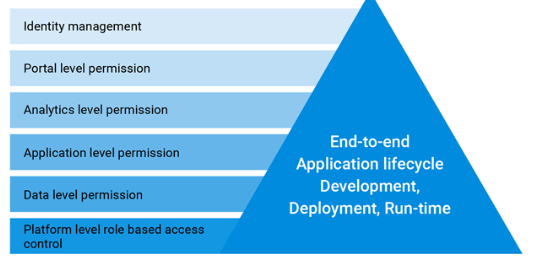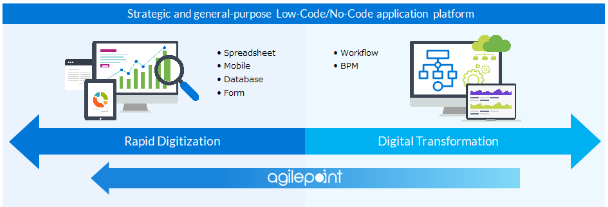Digital transformation has become a cliché. Still, it is crucial for mature and large organizations to remain competitive and relevant in the market.
You may compare Digital transformation to the process of remodeling a house. Just as remodeling a house involves updating and upgrading different aspects of the home to meet modern standards and improve its overall functionality, digital transformation involves updating and upgrading a company's processes, systems, and technologies to meet current business requirements and improve its overall efficiency and effectiveness.
In both cases, the goal is to create a more modern and functional environment that can better meet the needs of its inhabitants or users. Just as a home remodel might involve updating the plumbing, electrical wiring, and appliances to improve the overall comfort and convenience of the space, digital transformation might include implementing new software, updating IT infrastructure, and improving data analytics to enhance the company's operations and competitiveness in the market.
Overall, digital transformation is a complex and ongoing process that requires a comprehensive approach and a commitment to continuous improvement.
It may involve integrating digital technologies into all aspects of an organization to fundamentally change how it operates and delivers value to its customers. Or modernization of part of operations, like finance, supply chain, or compliance. Ultimately, digital transformation enables organizations to stay competitive and thrive in a volatile business environment.
Below we unpack why digital transformation projects fail and why winners win in their Digital Transformation initiatives.
Why Does Digital Transformation Mostly Lead to Failure?
According to studies by McKinsey, more than 70% of digital transformations lead to failures, while the success rate of tech-savvy industries is around 24%.
Companies with less than 100 employees are 2.7x more likely to achieve success in digital transformation than those with 50,000 or more employees.
“There is no alternative to digital transformation. Visionary companies will carve out new strategic options for themselves — those that don’t adapt will fail.” Jeff Bezos, founder, and CEO of Amazon.
There’s no denying that digital transformation is challenging as you need to master continued innovation to leverage new technologies like AI, IoT, Digital Process Automation, and data analytics.
However, triggers keep varying as sometimes you may need to meet the change in customer expectations or consolidate an organization after a merger. These fluctuating needs require companies to adopt flexible, governance-ready, and innovative technologies.
Below we list which factors determine the success and you can win in the race to digitally transform operations.
Critical Reasons Why Winners Win?
Having the right tech in place is only one part of the story, and the crucial part is how companies utilize this technology to support changes is the deciding factor of a successful digital transformation.
Deploying the right tech-savvy leaders
Adding the right leaders at the right places in the hierarchy is one of the key factors in digital transformation. Senior leaders must be more involved in the transformation journey. Many organizations have emphasized how engaging a chief digital officer (CDO) resulted in 1.6 times higher chance than others to report a successful digital transformation.
Selecting a clear goal and transformation candidate
A vague idea of succeeding in digital transformation doesn't cut it. Selecting a clear use case for a digital transformation project is essential to ensure that the project is relevant, achievable, and adds value to the organization. It helps to define the project's scope and expected outcomes, build support from stakeholders, and align the project with the company's strategic outcome it plans to achieve.
Bridge the gap between legacy and modern tech platforms
Another essential factor is engaging integrators and technology-innovation managers, which helps bridge the gaps between traditional and modern technology solutions within an enterprise.
Below we list five pillars of Digital Transformation journey, from talent development and reduction in technical debt to innovation across departments and agile governance.
Five Pillars of Digital Transformation
1) Talent development
Invest in talent acquisition and retention strategies that align with your team’s digital transformation goals and objectives.
World Economic Forum estimates that by 2024, 40% of workers will need up to six months of reskilling, and 94% of business leaders anticipate their employees to acquire new skills. Low-Code/No-Code and Citizen Development platforms can help upskill workers.
For example, GC-SDA, an AgilePoint customer, trained its non-IT staff for application development. Brian Schimpf, formerly a Business Analyst (BA) and Citizen Developer at GC-SDA, studied criminal justice and project management. His manager helped Brian acquire and polish his digital skills by training him on the AgilePoint platform. It allowed the organization to upskill the internal workforce to develop in-house apps.
It is just one example that shows how you can upskill and train employees on the latest technologies like business intelligence (BI), AI, IoT, and digital process automation.
If you are a large team/organization, you might have to establish digital upskilling and reskilling program to equip employees with the necessary skills.
Project Management Institute (PMI) offers a range of Citizen Developer courses to help your team upskill and reskill in this emerging tech.
2) Culture of innovation and continuous learning inspires creativity and experimentation:
By encouraging continuous learning, you can retain employees longer than the industry average. Hence, technology becomes an avenue to foster creativity and participation as your team members develop new solutions.
3) Reducing Technical Debt
As part of your Digital Transformation journey, you may thoroughly audit the organization's legacy systems and infrastructure to identify areas that require modernization and optimization.
We still come across prospects and customers running their operations through Excel. Hence, you can even start your digitalization journey with Excel.
Assessing platform fit is vital to reducing technical debt and modernizing your systems and processes. The platform you choose to enable digital transformation should support a range of use cases. You may start with upgrading your SharePoint workflows, moving on to cloud-enablement of existing apps, and building greenfield app projects.
Develop a phased approach to legacy system modernization that prioritizes critical systems and processes. We also call it the 'proof-of-value' approach instead of proof-of-concept, the former being rooted in identifying modernization projects that provide the best ROI.
4) Innovation across Departments
Another trend is to create cross-functional teams to foster collaboration and innovation across departments. It has become a significant theme for new digital transformation projects as IT leaders are expected to build cross-functional solutions that span horizontally across the whole organization, even to its partners and subsidiaries.
To understand more about creating cross-departmental solutions (that provide higher ROI) and knocking down traditional silos, you may check out our session post on “Can Citizen Development overcome the great divide between business and IT”?
5) Agile Governance
As you start contemplating digital transformation use cases for mature organizations with high compliance and reporting requirements, choosing platforms that support your compliance needs becomes crucial.
Apart from establishing clear guidelines and protocols for decision-making, risk management, and resource allocation in transformation projects, you may probe into the transformation platform’s governance tooling.
For instance, here’s a video blog explaining the governance model of AgilePoint. It may give ideas about how to approach governance, even in the case of other platforms.
Fig 2- Layered Enterprise Governance Framework

Lastly, invest in technology initiatives that address critical operational and strategic challenges. An operational challenge could be more tangible and bottom-line oriented, such as increasing efficiency and saving business costs. A strategic challenge may be timely achieving your post-merger integration goals and transforming customer/employee experiences.
It's vital to prioritize technologies that offer scalability, flexibility, and agility to adapt to changing business needs. It helps you avoid repeatedly migrating from your transformation platforms, whether ERP, CRM or a BPA platform.
Below we list a few examples of Digital Transformation projects each having a different trigger when it first started.
Digital transformation examples
Through our partnership with Project Management Institute’s Citizen Development program and case studies with global brands, we’ve captured the inside story of many digital transformation projects. Here are a few of the most recent success stories:
- Elbit Systems, a large Defense-equipment supplier used AgilePoint’s Low-Code Automation Solutions to transform its procurement function.
- Eneco used AgilePoint to digitalize its order management and delivery process for the smart thermostats division.
- The Salvation Army transformed its application development lifecycle by reducing app lifecycle by 75-80% lifecycle yet doubling the number of applications it developed with the same budget.
- Maccabi Healthcare digitally transformed its referral intake process, increasing referral patients by 950% leading to thousands of users entering the new digital app.
- General Conference of Seventh Day Adventists (GC-SDA), a global non-profit implements analytical reporting using AgilePoint
- Sound Transit, a Seattle public transit agency transformed its compliance reporting using and application upgradation using AgilePoint
A common theme between all the projects was their sustainability in the long run for the organizations using AgilePoint for their Digital Transformation use cases. Below we list key tenants of making your digital transformation projects sustainable beyond proof-of-concepts.
Sustainability of Digital Transformation Projects
With the proliferation of new technologies left, right, and center, deciding which initiatives to pursue and which to defer becomes challenging. However, a few common aspects, whether you pursue AI, Low-Code/No-Code, Process Excellence, or data initiatives, it is imperative that your Digital Transformation projects are sustainable. By sustainability we mean three things:
- Reusable: Digital solutions and apps are reusable across departments/business units and subsidiaries
- Governance: Maintenance and operations of solutions doesn’t strain your budgets/resources
- Adaptable: IT platforms should allow adaptation without refactoring or heavy migration efforts (in man hours, skill set, and compute resources)
If your digital transformation initiatives depend on point solutions that only cater to narrow use cases, it would be challenging to keep solutions sustainable.
The representation below shows how a unified platform approach helps address multiple and broadest sets of use cases.
Fig 1-

From an IT leader’s perspective, the platforms you chose to implement your Digital Transformation initiatives shall:
- Be able to create and support mission-critical applications and processes
- Improve and build upon those solutions over time
- Ensure full governance for manageability and risk mitigation
More digital transformation resources
Special topics for industries and Digital Transformation technology:
- Storm Proofing your Digital Transformation Journey: What characteristics must leaders remember of future-proof apps when making technology investments?
- Examples of enterprise citizen development to maximize strategic digital transformation.
Watch the video.
To get started, request a personalized demo of AgilePoint Business Process Automation software today and experience how it can help your business achieve its automation goals!
Are you ready to reengineer your business
automation processes?

A modern process automation and orchestration platform that enables you to open up and seize new business opportunities, supercharge innovation, unlock new levels of efficiency and productivity, and deliver the experiences that help you win.
Follow Us
Platform

Automate business processes and workflows at scale. AgilePoint helps enterprises democratize and accelerate digital transformation, reduce technical debt and future-proof ROI.
Resources
© 2023 AgilePoint. All rights reserved.



